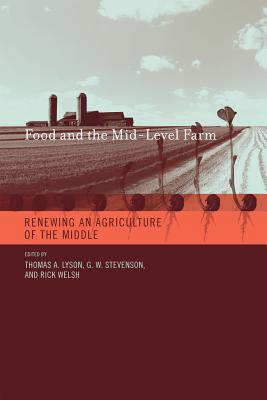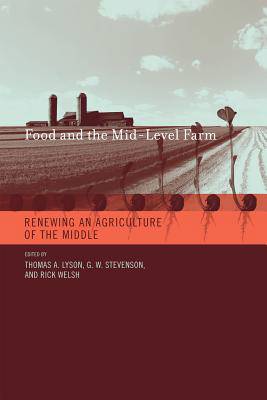
- Retrait gratuit dans votre magasin Club
- 7.000.000 titres dans notre catalogue
- Payer en toute sécurité
- Toujours un magasin près de chez vous
- Retrait gratuit dans votre magasin Club
- 7.000.000 titres dans notre catalogue
- Payer en toute sécurité
- Toujours un magasin près de chez vous
Food and the Mid-Level Farm
Renewing an Agriculture of the Middle
Description
Practitioners and scholars from a range of disciplines discuss how midsize farms can better connect with consumers, organize collectively to develop markets for their products, and promote public policies that address agriculture-of-the-middle issues.
Agriculture in the United States today increasingly operates in two separate spheres: large, corporate-connected commodity production and distribution systems and small-scale farms that market directly to consumers. As a result, midsize family-operated farms find it increasingly difficult to find and reach markets for their products. They are too big to use the direct marketing techniques of small farms but too small to take advantage of corporate marketing and distribution systems. This crisis of the midsize farm results in a rural America with weakened municipal tax bases, job loss, and population flight. Food and the Mid-Level Farm discusses strategies for reviving an "agriculture of the middle" and creating a food system that works for midsize farms and ranches. Activists, practitioners, and scholars from a variety of disciplines, including sociology, political science, and economics, consider ways midsize farms can regain vitality by scaling up aspects of small farms' operations to connect with consumers, organizing together to develop markets for their products, developing food supply chains that preserve farmer identity and are based on fair business agreements, and promoting public policies (at international, federal, state, and community levels) that address agriculture-of-the-middle issues. Food and the Mid-Level Farm makes it clear that the demise of midsize farms and ranches is not a foregone conclusion and that the renewal of an agriculture of the middle will benefit all participants in the food system--from growers to consumers.
Spécifications
Parties prenantes
- Editeur:
Contenu
- Nombre de pages :
- 296
- Langue:
- Anglais
- Collection :
Caractéristiques
- EAN:
- 9780262622158
- Date de parution :
- 01-05-08
- Format:
- Livre broché
- Format numérique:
- Trade paperback (VS)
- Dimensions :
- 155 mm x 226 mm
- Poids :
- 426 g






